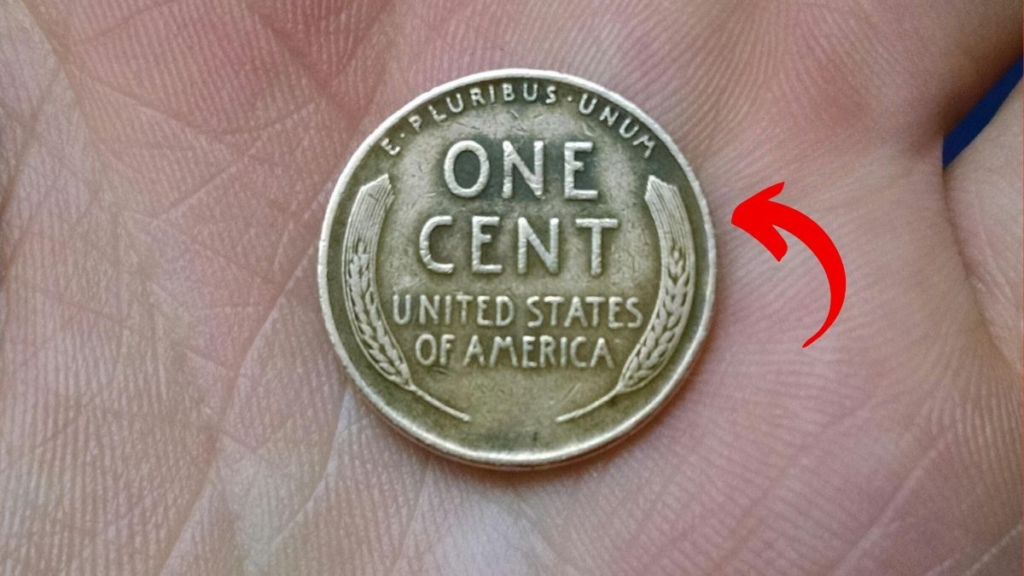your pocket change that would be able to pay your mortgage, fund your dream vacation, or triple your savings overnight. Too good to be true? Not when it comes to a rare Lincoln Wheat Penny in the stupendously high price today of $224,000 and the best part, it could still be floating around somewhere in circulation today.
Whether you are a coin collector or simply someone interested in what is in your loose change, it would not be a story about buried treasure that you won’t want to miss catching.
What Is a Lincoln Wheat Penny?
The Lincoln Wheat Penny, officially the Lincoln cent, was first issued in honor of President Abraham Lincoln’s centenary in 1909. Designed by Victor D. Brenner, it was also the first coin in American history to bear the image of an actual human being.

The reverse of the coin, with two stalks of wheat, earned it this common nickname: the “Wheat Penny.” These pennies were produced between 1909 and 1958, when the design was replaced by the Lincoln Memorial in 1959.
Why Are Some Wheat Pennies Worth So Much?
Most of the Lincoln Wheat Pennies are worth from 3 to 10 cents, depending on their condition. Some rare issues, however, are worth thousands and a few very special ones can even approach or exceed a hundred thousand dollars.
So, why are some Wheat Pennies so valuable?
- Mint Errors
Coins that were mis struck or struck with the incorrect metal are very rare and valuable. The most well-known is the 1943 copper Wheat Penny, a product of a production mistake during WWII. - Low Mintage
Coins from years or mints that made fewer coins are usually more desirable. For instance, the 1909-S VDB penny is very collectible. - Condition
A mint-condition coin, particularly one that has been professionally graded MS-65 or better, will always command a premium. - Historical Significance
Coins that are older and have unusual histories, like being associated with a war or presidential anniversary, tend to increase in value over time.
The $224,000 Lincoln Wheat Penny
The individual Lincoln Wheat Penny that sells for $224,000 is thought to be one of the few 1943 copper cents or other mint-error variations that went against standard manufacturing standards.
The 1943 Copper Penny Story
In 1943, when there were copper shortages during World War II, pennies were made by the U.S. Mint out of zinc-coated steel. Unfortunately, a small number of copper planchets (blanks) remained in the machines from 1942 and were utilized to mint a small quantity of 1943 pennies in copper.
It is estimated that only 20 to 40 of these coins have survived. Due to their scarcity and historical background, these copper 1943 Wheat Pennies have become some of the most sought-after coins among collectors.
Still in Circulation?
Yes, believe it or not, some of these rare Lincoln Wheat Pennies may still be in everyday circulation. Many people have no idea what they’re holding a lucky few might find one in an old piggy bank, in a jar of coins from a grandparent, or even in their daily pocket change. This is why it pays to check your coins carefully, especially pennies from the 1940s and 1950s.
Key Dates to Keep an Eye Out For
Here are a couple of Lincoln Wheat Penny dates you should certainly keep an eye out for:
- Year Mint Mark Notes Potential Value
- 1909-S VDB first year, low mintage $600–$2,000+
- 1914 D Rare in circulated condition $200–$3,000
- 1922 No D missing mint mark error $500–$10,000
- 1943 Copper (no steel): Extremely rare error $100,000–$400,000
- 1955 Doubled Die Iconic minting error: $1,000–$15,000
How to Identify If You Have a Valuable Penny
Here are a couple of ways you can identify if you have a valuable Lincoln Wheat Penny:

- Check the Date and Mint Mark: Turn over the coin and examine the year and where it was produced (indicated as D, S, or no letter for Philadelphia).
- Weigh the Coin: An actual 1943 copper penny will weigh roughly 3.11 grams, while the steel penny weighs approximately 2.7 grams.
- Use a Magnifier: Examine closely for doubling of the text or date, which might signal a scarce error.
- Use a Magnet: Steel pennies will cling to a magnet. Copper ones will not. A penny from 1943 that doesn’t cling? That’s your golden ticket!
- Consult an Expert: Always have your coin with the rare look graded by an expert coin grading service such as PCGS or NGC.
Where to Sell a Rare Coin
If you’re fortunate enough to discover a rare Lincoln Wheat Penny, here’s where to cash out:
- Auction houses such as Heritage Auctions
- Online sites such as eBay (but be careful!)
- Coin Expos or Shows
- Certified Coin Dealers
- Grading services for authentication and appraisal
Ensure your coin is graded prior to selling it gains confidence and brings higher bids.
Read More :- $67 Million Bicentennial Quarter and 4 Rare Coins Worth $600K – Check Your Change Now!
Final Thoughts
The concept that such a small, unassuming coin can be worth $224,000 is simply mind-boggling. The Lincoln Wheat Penny reminds us that treasures are not always in large packages occasionally they’re tucked away in your loose change. So the next time you get a clinking handful of pennies, do a double take. That old, rusty coin could make your life.
FAQs :-
What makes the Lincoln Wheat Penny worth $224,000?
It’s typically a rare mint error, such as being struck in copper in 1943 instead of steel, or having a unique die variation.
Where can I get my penny appraised?
You can consult professional coin dealers, grading services like PCGS or NGC, or online auction platforms.
What is the best way to store valuable coins?
Keep them in acid-free holders, coin flips, or airtight containers to prevent damage or oxidation.



















